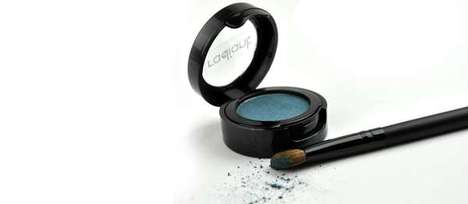Staying Ahead of the Curve
Denyse Beaulieu, Director of Color, Marcelle Inc.
Related Trend Reports
Art & Design, Branding, Celebs, Cosmetics, Design, Fashion, Fashion for Men, Gadgets, Hair, Health, Life, Lifestyle, Luxury, Marketing, Media Having been with the company for over 16 years, Denyse Beaulieu plays a vital role at Marcelle Inc. She finds ways to bring newness to Marcelle's color division, as well as looking over the color sector of Annabelle, Marcelle's subsidiary brand. A lot of her work has to do with foreseeing trends in the cosmetics industry, and to incorporate that into product development. In order to keep her eyes open for emerging trends, Beaulieu likes to be updated on friends' overseas travels. She also keeps up with Trend Hunter's monthly newsletters.
Having been with the company for over 16 years, Denyse Beaulieu plays a vital role at Marcelle Inc. She finds ways to bring newness to Marcelle's color division, as well as looking over the color sector of Annabelle, Marcelle's subsidiary brand. A lot of her work has to do with foreseeing trends in the cosmetics industry, and to incorporate that into product development. In order to keep her eyes open for emerging trends, Beaulieu likes to be updated on friends' overseas travels. She also keeps up with Trend Hunter's monthly newsletters.Four Questions With Denyse Beaulieu
1. How do you motivate your team to come up with good ideas?
When we sit down to come up with ideas, there's always a lot that is generated. We work a lot day to day, but make sure to implement a system where we get together to sit down twice a month. This is a time to bring to the table things that we saw, things that were launched or something we read. We talk about how we can innovate from these things and apply it to our work. Good ideas can come from anybody; not necessarily always someone with a creative role, but even somebody in sales. They say that you’re supposed to dedicate ten percent of your work to creativity. I wouldn’t say [we do] ten percent exactly, but we do dedicate a portion of our time.
2. Do you have specific rituals for re-setting your team to be creative?
Yesterday, we were off-site trying to look into the future; we did a creative “think tank.” We had many exercises that help you to think fast. You have to be creative and quickly write down words; let all the ideas out and try and sort them afterwards.
3. How do you identify trends? What resources does your team use to spot trends and consumer insights?
If you’re spotting the trend, it’s already too late. You have to be a part of the trend. If we're seeing a trend hit the market and we're not already there, then there's no point in acting upon it. We try to identify potential trends and ask ourselves, "will it become big?". Of course, this is a risk that we take. An example is the BB cream. We launched a BB cream in the same week as the first ones, at the very beginning of the trend. BB cream was a risk at the time because we had no idea it'd be introduced by every cosmetic company in North America six months down the line. What we focus on is the emerging trends because you have to be quick to react. It's a total different ball game; nobody knows what's going to be the next big thing, so we take the time to keep an eye open. I [personally] always take a look at the Trend Hunter monthly newsletter. I also use Sputnik, Trendwatching and once in a while, we conduct surveys.
4. What is the biggest obstacle you face when innovating?
Sometimes if you're introducing a product or concept that nobody's ever seen or heard of, you need to reinvent the wheel. You need to gather everybody and brainstorm how to make this come to life. It takes a little bit of creativity on everybody's part, including production, engineering, package design, promotion or sales. Another challenge is timing; being quick to market. We always ask first whether it’s feasible.
Featured Articles

Cosmetic Play
Modern fashionistas crave a more playful take on aesthetics

Avian Beauty
Fowl-inspired influences take flight in fashion and cosmetics

Made-Over Masculinity
Traditional "manliness" is shaken by men's interest in makeup

Nail-Worn Wealth
Female consumers are turning to opulent nail decals to communicate wealth

Spray-On Ease
Odd spray innovations make products convenient and easy to use

Pure Pretty (UPDATE)
All-natural beauty products become preferred choice for consumers

Pop Beauty
Cosmetics piggy back off of pop culture phenoms

Beneficial Beauty
Cause-driven products become prevalent in the cosmetics industry

Stealth Sticks
Using traditional cosmetics to disguise gadgets and weapons